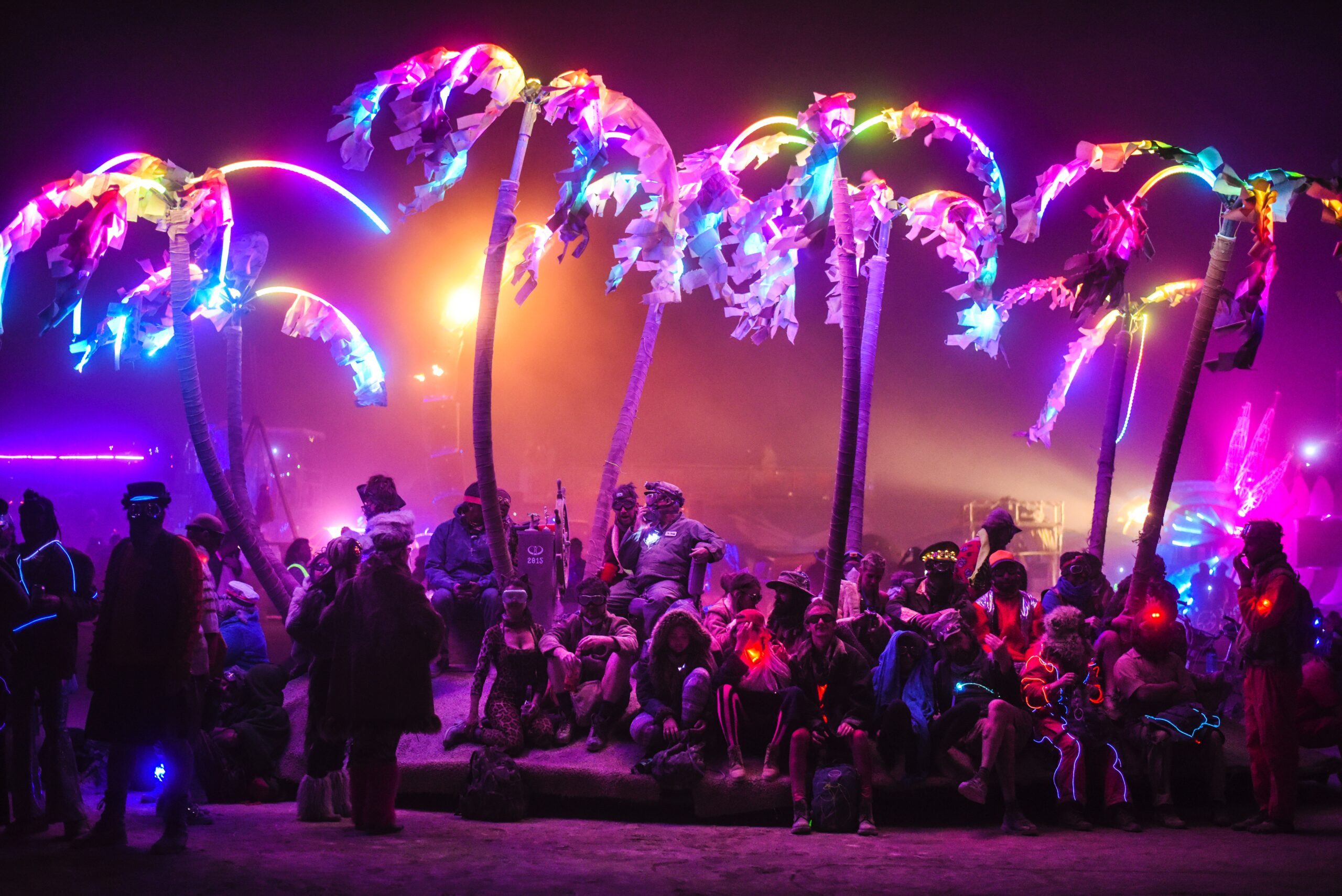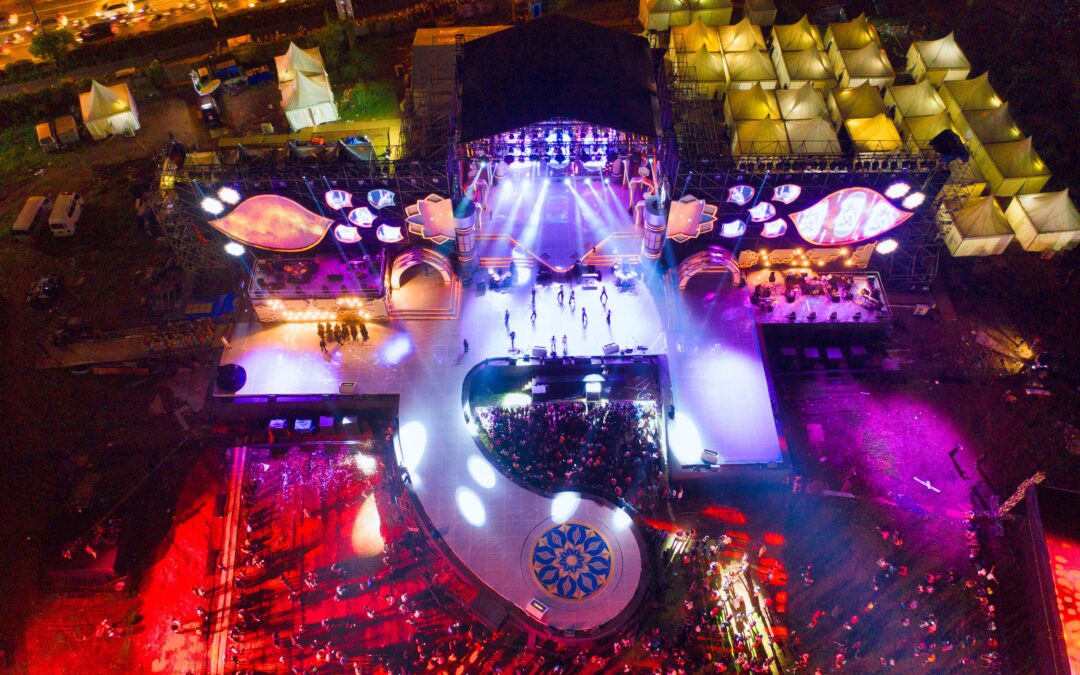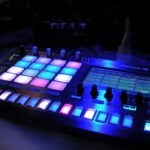In the past few years, the live music industry has experienced a dramatic shift towards virtual concerts and live streams. The COVID-19 pandemic accelerated this trend, forcing artists to pivot their performances from live events to digital platforms.
With virtual concerts and live streams, musicians can connect with their audience from anywhere in the world, increasing their reach and providing an opportunity to interact with their fans in new ways.
However, successful virtual concerts and live streams require careful planning and execution, including music production. In this blog post, we’ll discuss the key aspects of music production for virtual concerts and live streams, including pre-production, recording, mixing, mastering, sound design, visual design, promotion, and marketing.
Setting up a Virtual Concert or Livestream
Before we dive into music production, it’s important to understand the technical requirements for setting up a virtual concert or live stream. The first step is to choose a platform that meets your needs, such as Facebook Live, Instagram Live, or Twitch. Each platform has its own requirements, so it’s important to research and test the platform before the event.
Next, you’ll need to consider technical requirements such as internet speed, cameras, microphones, and lighting. Poor internet connection or inadequate equipment can ruin the quality of your live stream, so it’s important to invest in high-quality equipment.
Finally, sound considerations are important in virtual concerts and live streams. Live sound engineering is different from studio recording, so it’s important to have an experienced sound engineer who can handle the technical requirements for the event.
In addition to the technical aspects of music production, setting up a virtual concert or live stream also involves a range of logistical and practical considerations. Here are some key factors to consider when setting up a virtual concert or live stream:
Platform Selection
Choosing the right platform for your virtual concert or live stream is critical to its success. There are many different platforms available, including social media platforms such as Facebook Live, Instagram Live, and YouTube Live, as well as dedicated live streaming platforms such as Twitch and StageIt.
When selecting a platform, consider factors such as the platform’s features, audience reach, technical requirements, and any associated costs. It’s also important to ensure that the platform you choose is appropriate for your target audience.
Technical Setup
The technical setup is another critical aspect of setting up a virtual concert or live stream. This involves ensuring that you have the necessary equipment and software to deliver high-quality audio and video.
Some key technical considerations include:
- Audio equipment: Make sure you have a high-quality microphone, audio interface, and headphones or speakers.
- Video equipment: Consider using a high-quality camera and lighting setup to ensure that your video is clear and well-lit.
- Internet connection: Make sure that you have a stable, high-speed internet connection to avoid any interruptions or buffering during the live stream.
- Software: Choose the right software for your needs, such as a digital audio workstation (DAW) for music production, or live streaming software such as OBS (Open Broadcaster Software).
Rehearsals and Testing
Rehearsing and testing your setup before the actual live stream is essential to ensure that everything runs smoothly. This can involve setting up a mock live stream and testing your equipment and software, as well as running through your performance to ensure that everything is polished and ready to go.
It’s also important to consider factors such as lighting and stage setup, as well as any special effects or visuals that you plan to use during the performance. By rehearsing and testing your setup beforehand, you can identify any potential issues and ensure that your live stream is a success.
Audience Engagement
Engaging with your audience is a critical aspect of any virtual concert or live stream. This can involve using chat features or other interactive tools to connect with your audience and create a sense of community.
Some key audience engagement strategies include:
- Using chat features to interact with your audience during the performance.
- Encouraging your audience to share the live stream on social media.
- Running giveaways or contests during the performance to encourage engagement.
- Encouraging audience members to submit song requests or shoutouts.
By engaging with your audience during the performance, you can create a more interactive and engaging experience for your fans.
Monetization
Monetizing your virtual concert or live stream can involve a range of strategies, depending on your goals and audience. Some common monetization strategies include:
- Charging for tickets to the live stream.
- Offering VIP packages or merchandise bundles.
- Running sponsored content or ads during the performance.
- Accepting donations or tips from viewers.
It’s important to consider your goals and audience when selecting a monetization strategy, as well as any associated costs or logistics.
Ultimately, setting up a virtual concert or live stream involves a range of technical, logistical, and practical considerations. By carefully planning and executing your setup, engaging with your audience, and selecting the right monetization strategy, you can create a successful and memorable event for your fans.
Check out: 8 Ways to Make Money as a Music Producer in 2023
Pre-Production
Pre-production is the planning phase of music production, where you decide on the songs to perform, arrangements, and rehearse for the event. For virtual concerts and live streams, pre-production is critical to ensure the event runs smoothly.
Song selection and arrangement are key aspects of pre-production. You need to choose songs that will engage your audience and fit the theme of the event. In hip-hop culture, artists often incorporate remixes and mashups into their performances to keep the audience engaged.
Rehearsals and soundcheck are also critical in pre-production.
Virtual concerts and live streams require extra preparation, as technical difficulties can arise during the event. It’s important to run a soundcheck and rehearse the performance to ensure everything runs smoothly.
Equipment and software are also important in pre-production. You’ll need a computer, audio interface, and digital audio workstation (DAW) software to record and mix the music. In hip-hop culture, popular DAW software includes Pro Tools, Logic Pro, and Ableton Live.
Another important aspect of pre-production is selecting the right equipment and software for your music production needs. This can involve choosing the right digital audio workstation (DAW), selecting the right plugins and virtual instruments, and ensuring that you have the necessary hardware to deliver high-quality audio.
It’s also important to consider factors such as the genre of music you’ll be producing, the intended audience, and any special effects or production techniques that you plan to use. By carefully selecting your equipment and software, you can ensure that your music production is efficient, effective, and tailored to your unique needs and goals.
Recording
The recording is the process of capturing the performance, which can be done either live or pre-recorded. In virtual concerts and live streams, recording is critical to ensure the quality of the music.
Recording techniques for virtual concerts and live streams vary depending on the platform and technical requirements. Multitrack recording is a popular technique, where each instrument and vocal is recorded separately and then mixed together. This allows for more control over the sound during the mixing stage.
Monitoring is also important during recording, as it allows the sound engineer to hear the performance in real time and make adjustments as necessary. In hip-hop culture, monitoring is critical during recording to ensure the beat and vocals are aligned.
Mixing
Mixing is the process of blending multiple tracks together to create a cohesive sound. In virtual concerts and live streams, mixing is critical to ensure the quality of the music.
The mixing process involves balancing levels, equalization (EQ), and effects processing. Balancing levels involves adjusting the volume of each track to create a cohesive sound. EQ involves adjusting the frequencies of each track to create a balanced sound.
Effects processing involves adding effects such as reverb, delay, and distortion to enhance the sound Mixing techniques for virtual concerts and live streams can vary depending on the platform and technical requirements.
For example, Facebook Live has limited audio quality, so it’s important to optimize the mix for the platform. In hip-hop culture, mixing techniques such as sidechain compression and parallel processing are often used to enhance the sound.
Mastering
Mastering is the final stage of music production, where the final mix is prepared for distribution. In virtual concerts and live streams, mastering is critical to ensure the quality of the music.
Mastering involves loudness and dynamics processing, where the overall volume and dynamics of the mix are adjusted to optimize the sound for different platforms. For example, mastering Facebook Live requires a different approach than mastering streaming services such as Spotify or Apple Music.
Mastering techniques for virtual concerts and live streams can vary depending on the platform and technical requirements. In hip-hop culture, mastering techniques such as stereo imaging and limiting are often used to enhance the sound.
Sound Design
Sound design is the process of creating unique sounds and incorporating sound effects into the performance. In virtual concerts and live streams, sound design is critical to enhancing the overall experience of the event.
Creating unique sounds for virtual concerts and live streams can involve using synthesizers, samples, and sound effects. In hip-hop culture, artists often use samples and sound effects to enhance the beat and create a unique sound.
Incorporating audience sounds is another important aspect of sound design in virtual concerts and live streams. This can involve using sound effects such as applause or crowd noise to enhance the overall experience of the event.
Visual Design
Visual design is the process of creating a visual identity for the event, including lighting, stage design, and video production. In virtual concerts and live streams, visual design is critical to enhancing the overall experience of the event.
Creating a visual identity for virtual concerts and live streams can involve using lighting and stage design to create a unique atmosphere. Video production can also be used to enhance the overall experience of the event, including incorporating live footage and animations.

People in a stage party
In hip-hop culture, visual design is often used to enhance the performance, including using lighting and stage design to create a unique atmosphere.
Promotion and Marketing
Promotion and marketing are critical aspects of virtual concerts and live streams, as they help to increase awareness and engagement for the event. This can involve using social media strategies and collaborating with influencers.
Social media strategies can involve using platforms such as Instagram, Twitter, and Facebook to promote the event and engage with the audience. Collaborating with influencers can also be an effective way to increase awareness and engagement for the event.
In hip-hop culture, promotion, and marketing are critical to the success of the event, including using social media strategies to engage with the audience and collaborating with influencers to increase awareness.
Conclusion
In conclusion, music production is a critical aspect of virtual concerts and live streams, requiring careful planning and execution to ensure the quality of the music. Pre-production, recording, mixing, mastering, sound design, visual design, promotion, and marketing are all important aspects of music production for virtual concerts and live streams.
With the rise of virtual concerts and live streams, the music industry has seen a dramatic shift towards digital platforms, providing an opportunity for artists to connect with their audience in new ways. By understanding the key aspects of music production for virtual concerts and live streams, musicians can create engaging and memorable experiences for their fans.






